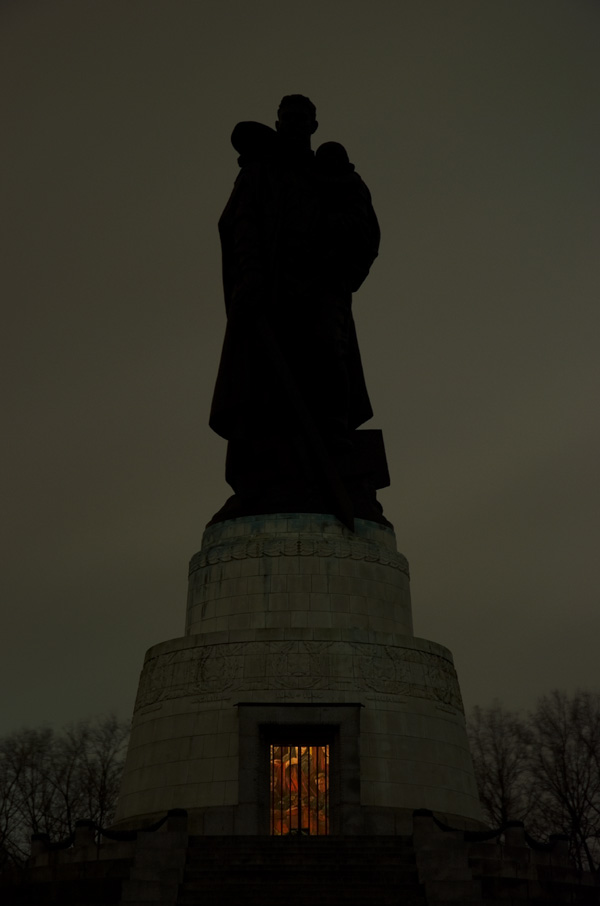 One of the nicest invitations so far this year came from my favourite Japanese magazine, the men’s style bible Huge (which was founded a long time before men’s style bibles became popular in Europe, by the way), who asked me to participate in a monthly column called Storyboard, in rotation with B Store from London and IO and Johan Kugelberg from New York. Conceived as a personal postcard from the various cities, for the current issue of Huge, I selected one of my favourite places in Berlin, the Soviet War Memorial, as a good place to start:
One of the nicest invitations so far this year came from my favourite Japanese magazine, the men’s style bible Huge (which was founded a long time before men’s style bibles became popular in Europe, by the way), who asked me to participate in a monthly column called Storyboard, in rotation with B Store from London and IO and Johan Kugelberg from New York. Conceived as a personal postcard from the various cities, for the current issue of Huge, I selected one of my favourite places in Berlin, the Soviet War Memorial, as a good place to start:
Berlin-based artist Cyprien Gaillard once argued that architecture can be experienced at its best in a state of sullen hang-over, and ever since I dragged some visiting friends along to the Soviet War Memorial for a freezing Sunday’s winter walk with a sharp headache and much too little sleep behind us after a long night, I tend to agree.
We had walked through East Berlin’s Treptower Park and came up the steps to the memorial, flanked by two kneeling soldiers hoisting up granite Soviet flags, when we had our moment: The ridiculously oversized field of tombstones came into sight, crowned by the literally gigantic statue of the soldier – carrying a child on his left, a sword in his right, with a crushed swastika underfoot – silhouetted against the sky while darkness fell. It was kind of awe-inspiring and absurd at the same time. It was a magic moment.
Berlin, of course, embodies Europe’s troubled past of the 20th century like no other, traces of which can be found all over the grey city – most obviously in the architecture and countless monuments from different eras, not seldom cause for controversy, demonstrating the city’s uneasy relationship with its own unwelcome heritage. While the Fascist era has its most dramatic architectural embodiment in the 1936 Olympic Stadium on the western side of the city, the Soviet War Memorial might be its Communist counterpart, and a case in point as to how similar the imagery of the two opposing ideologies actually was.
Imposed in 1949 on the East German government by the Soviet Union as a memorial and cemetery to some of the 80,000 fallen Russian soldiers during the Battle of Berlin, the Soviet Monument has never been popular with East Berliners, and today it is fortunately largely ignored. Which makes it a great place to go and think, as it’s mostly deserted and windswept, in a soothing kind of way. The magic moment never fails to impress – particularly on a cold and rainy winter evening with a severe hangover.
Photography by Kai von Rabenau

One Trackback/Pingback
[...] our second contribution to the current issue of Japanese Huge magazine, we talk about a store that we know very well [...]